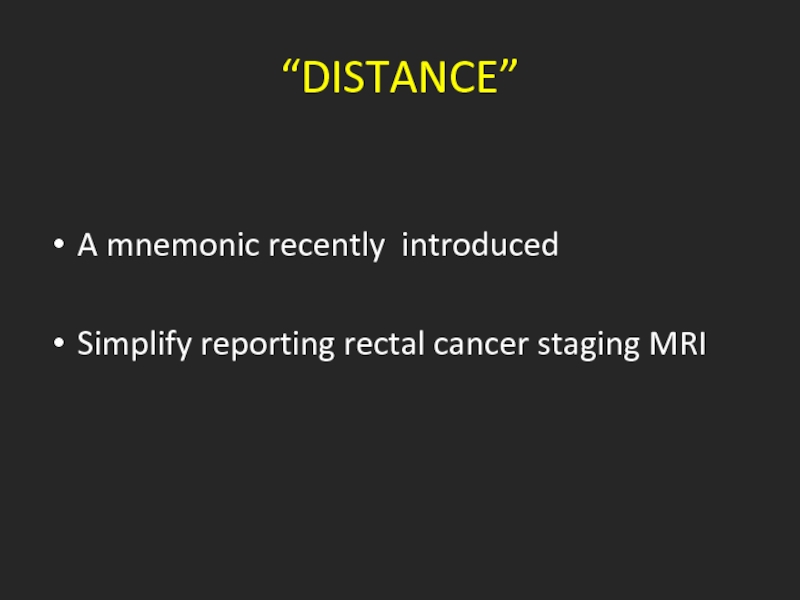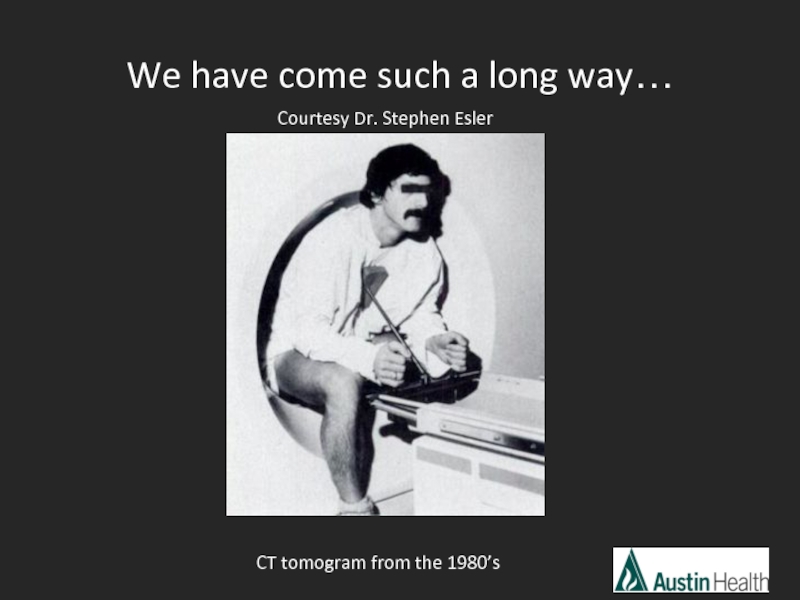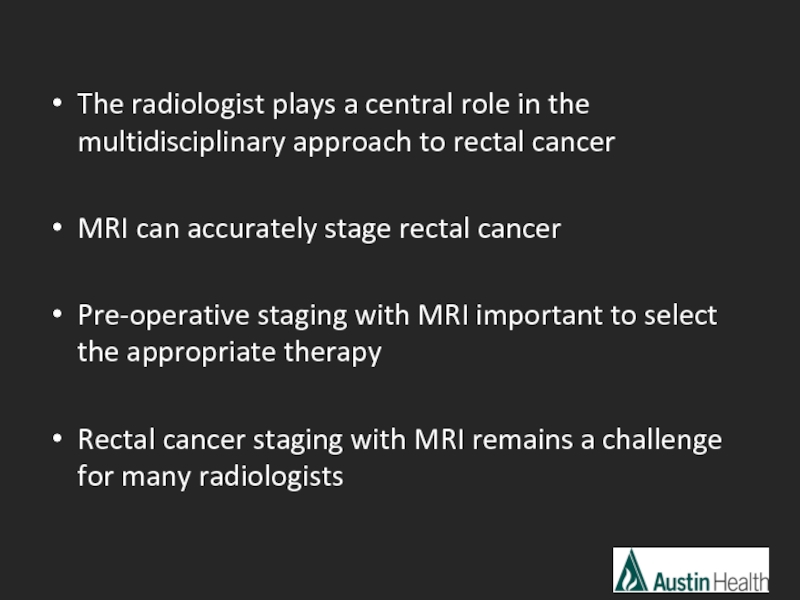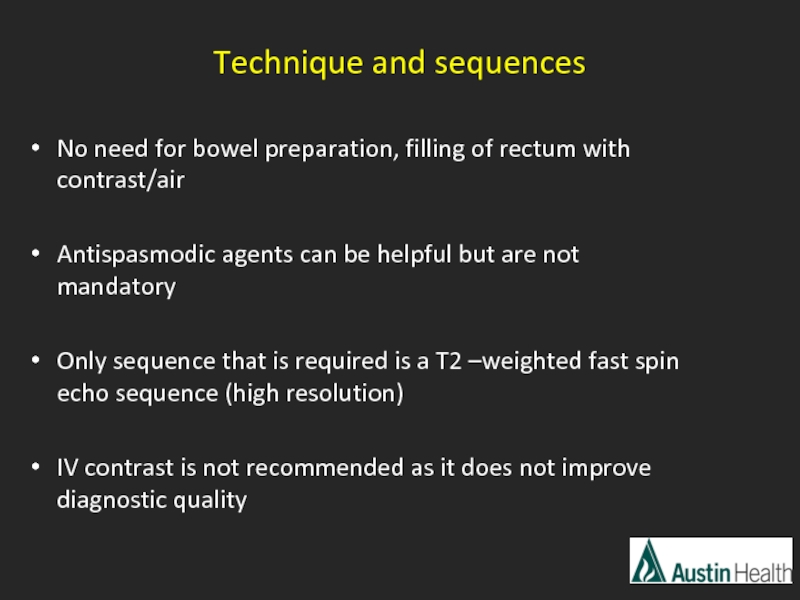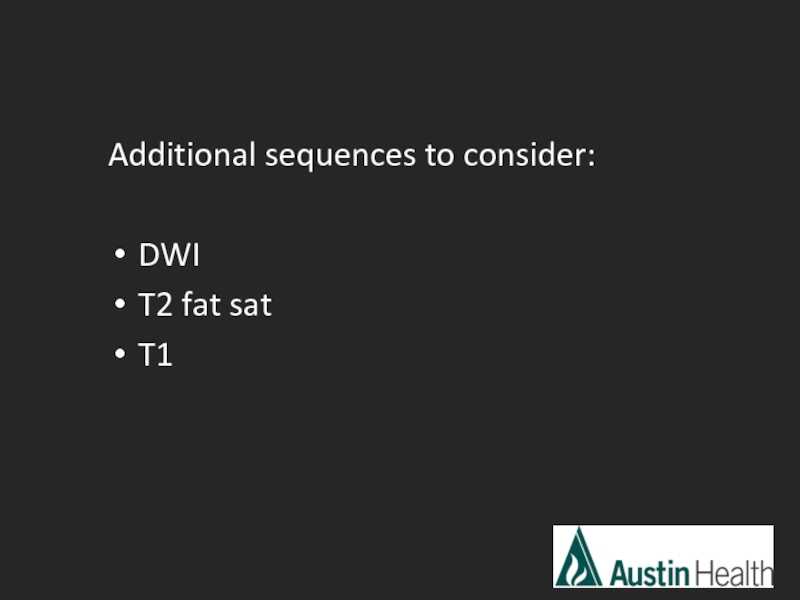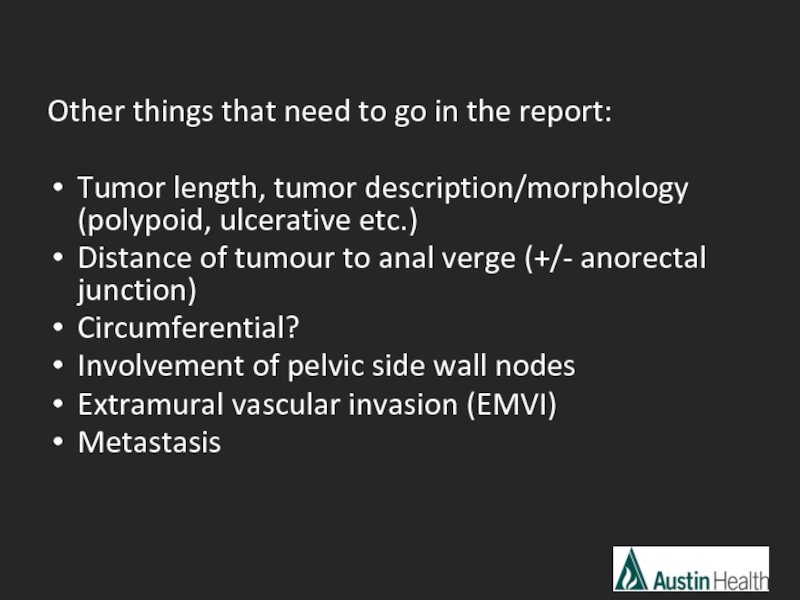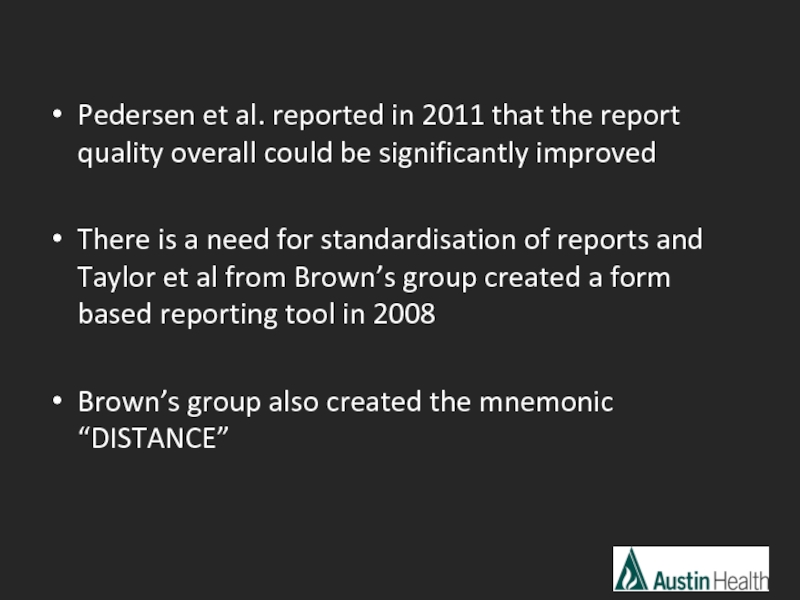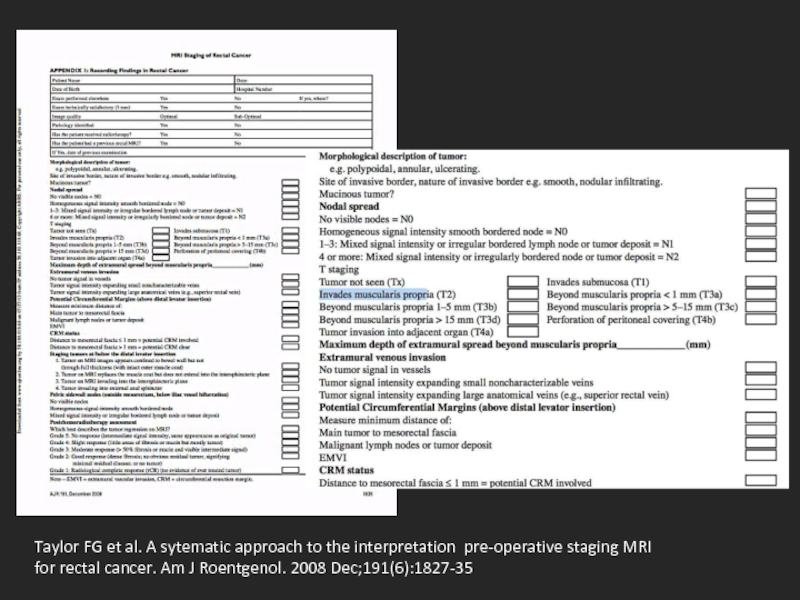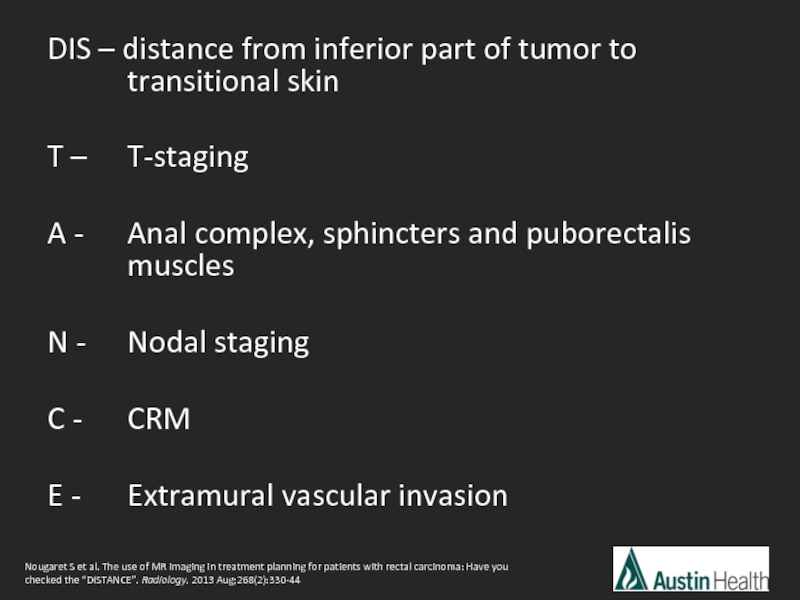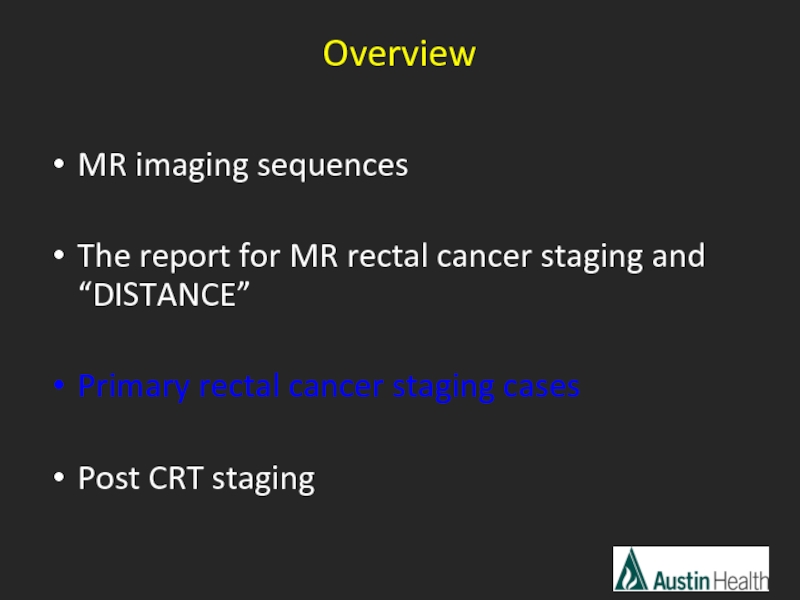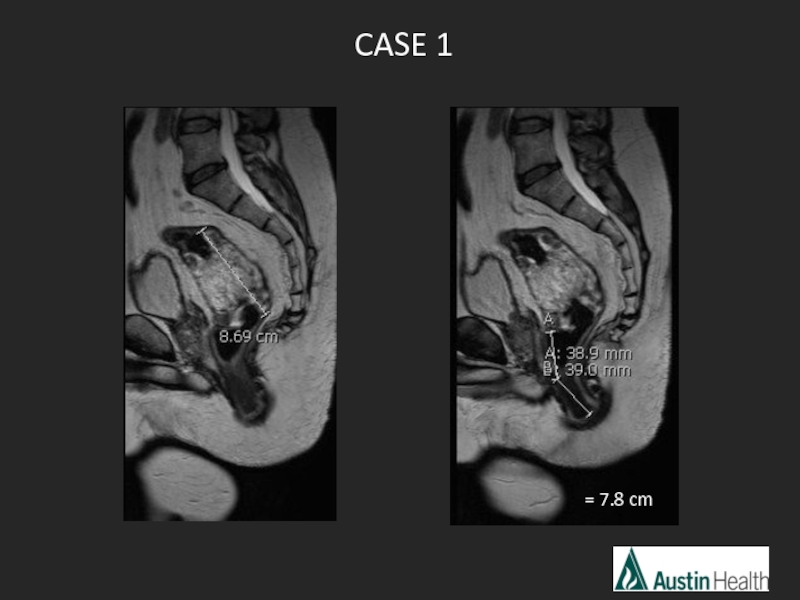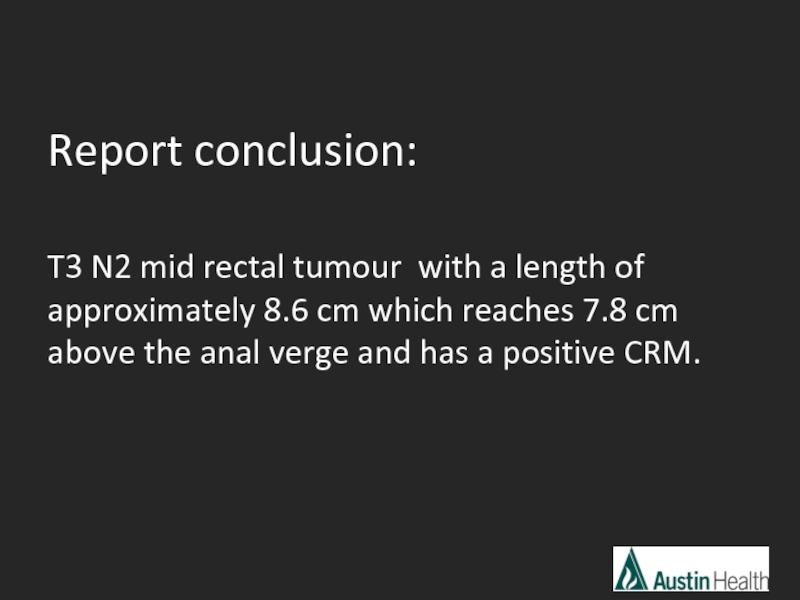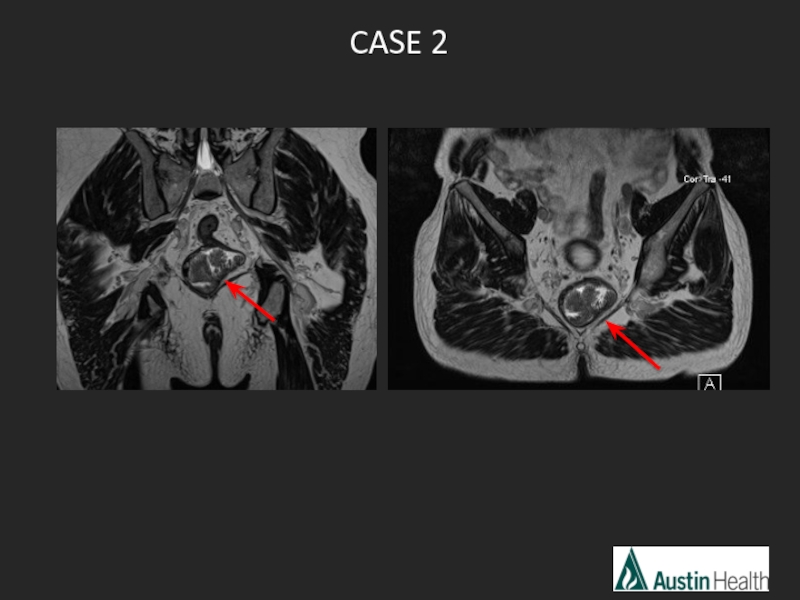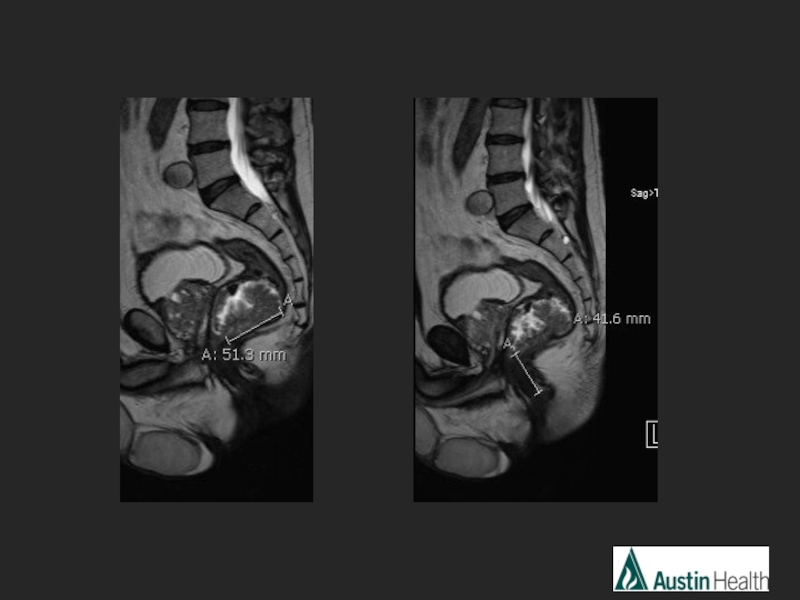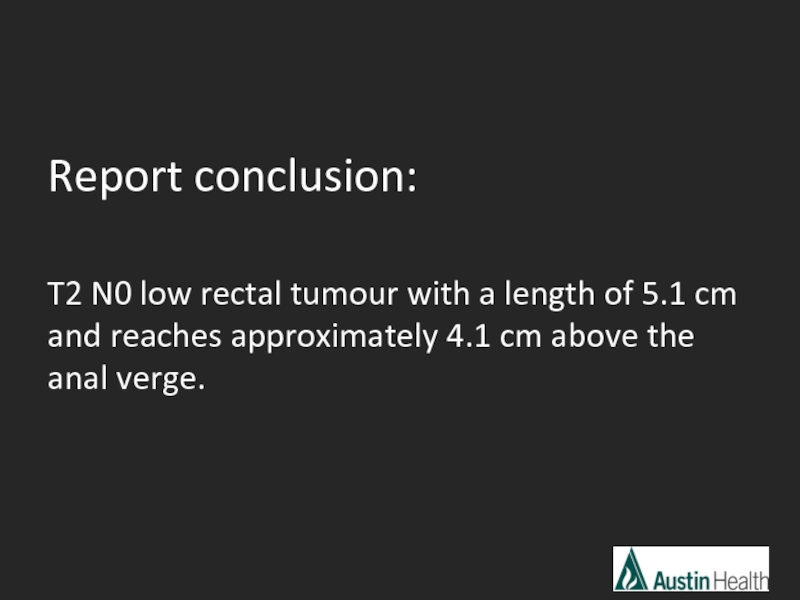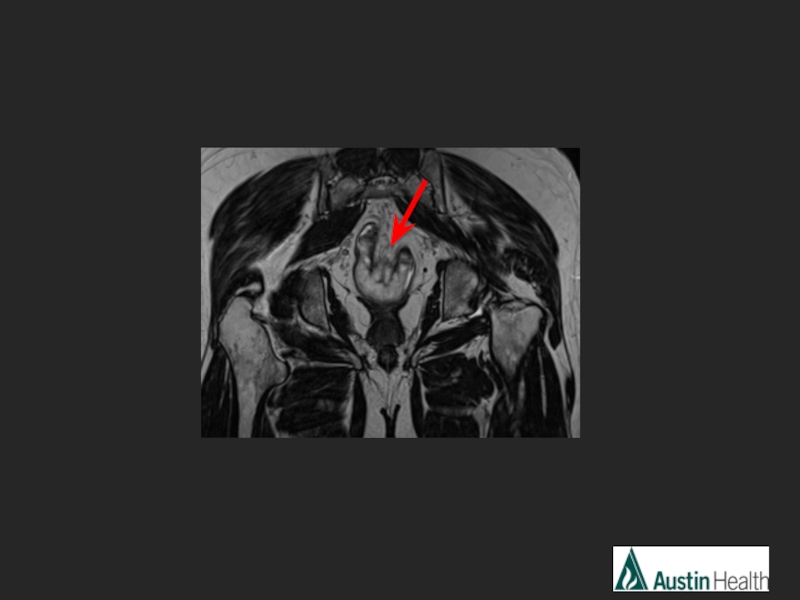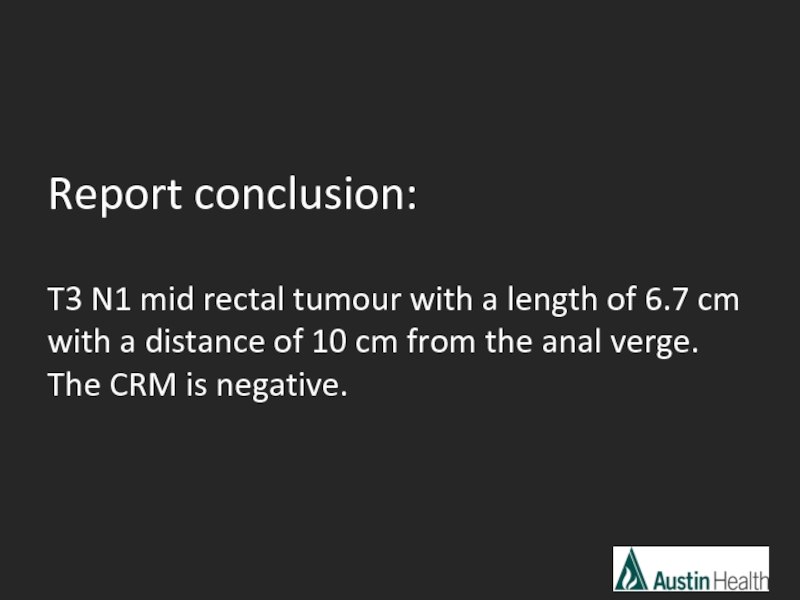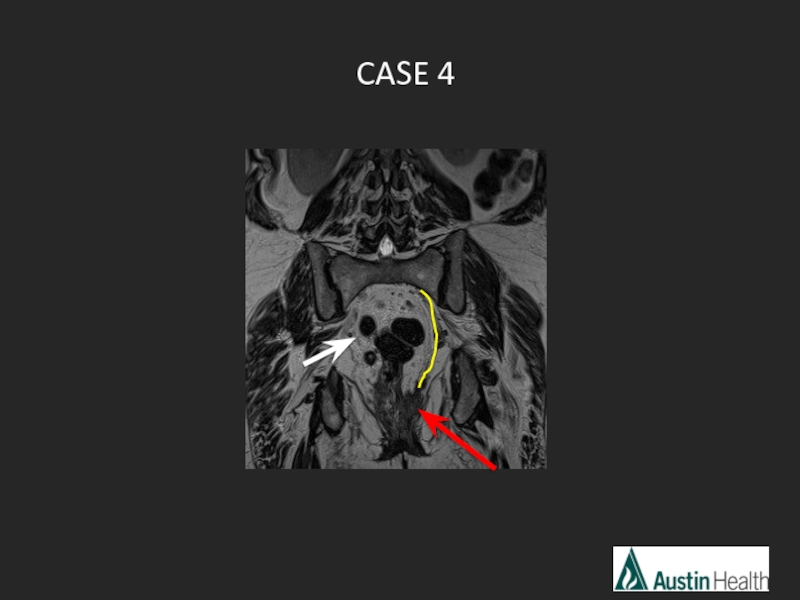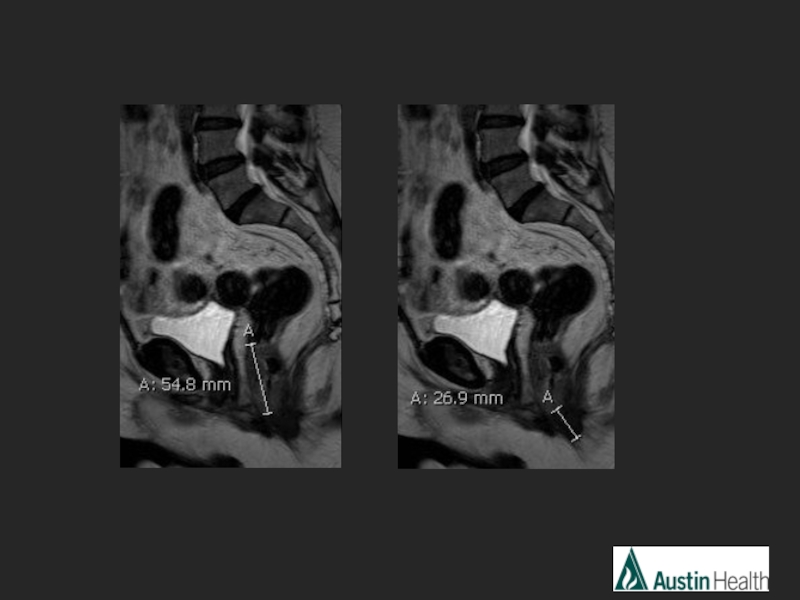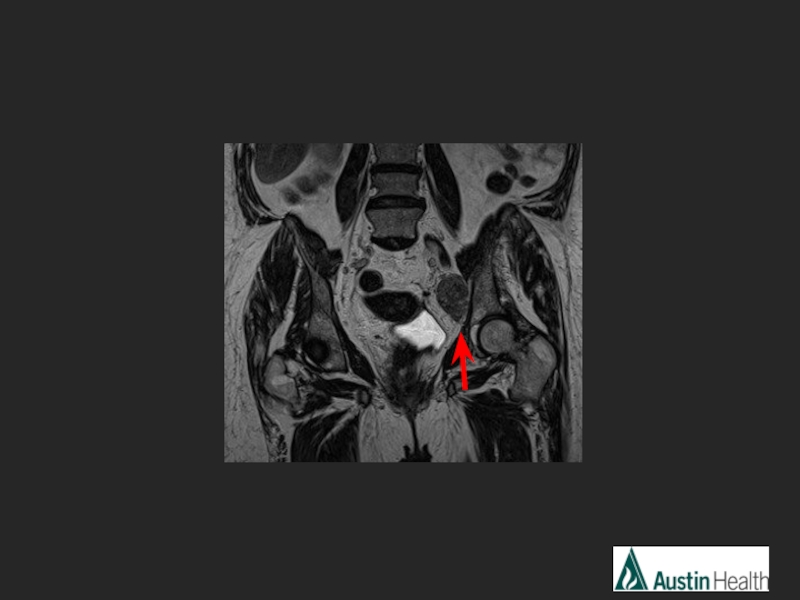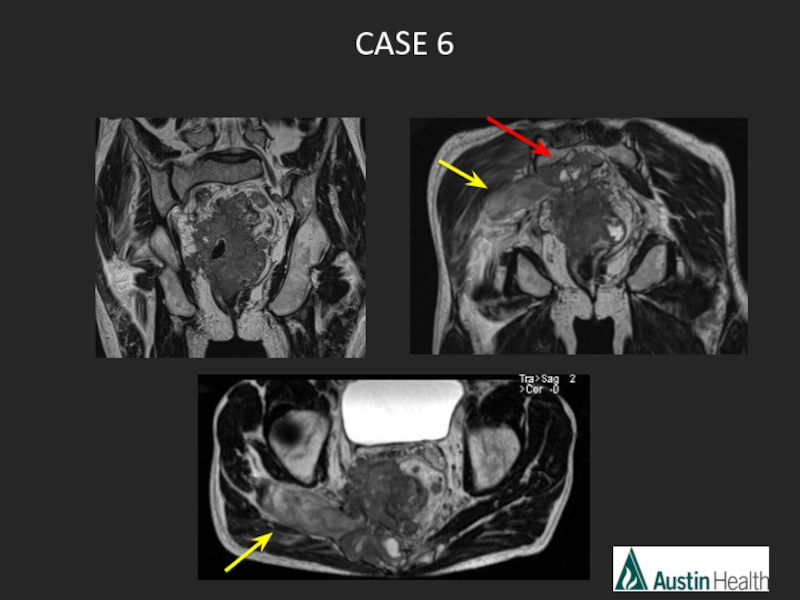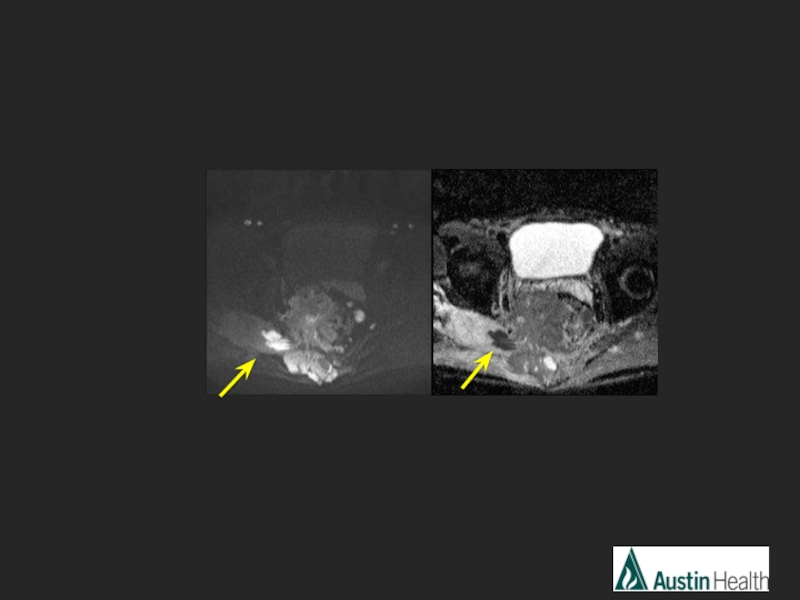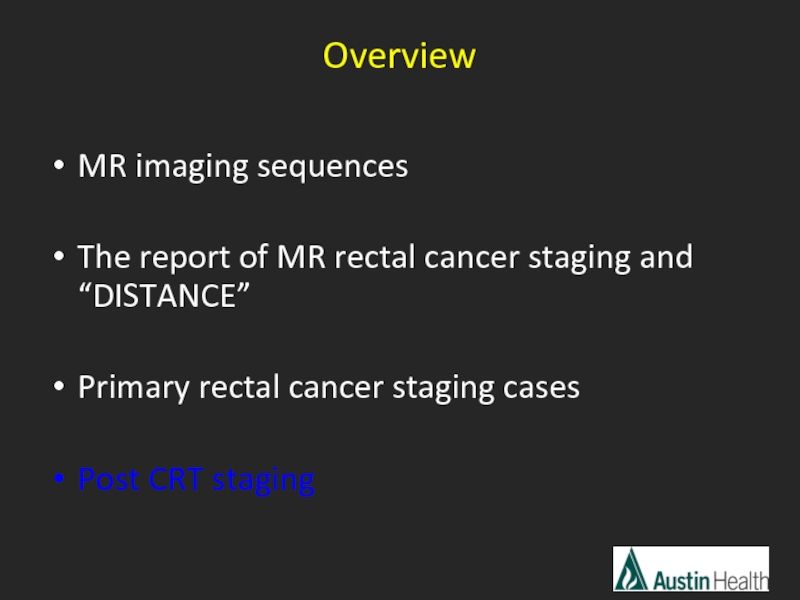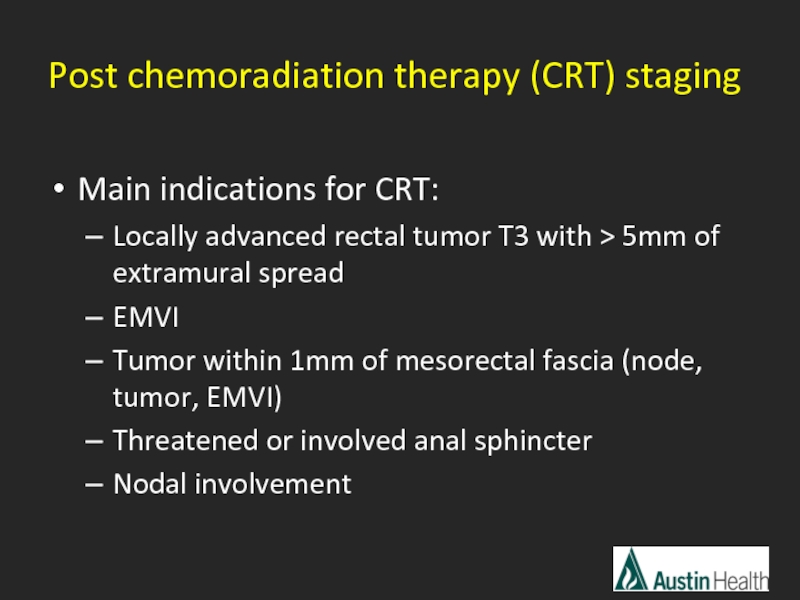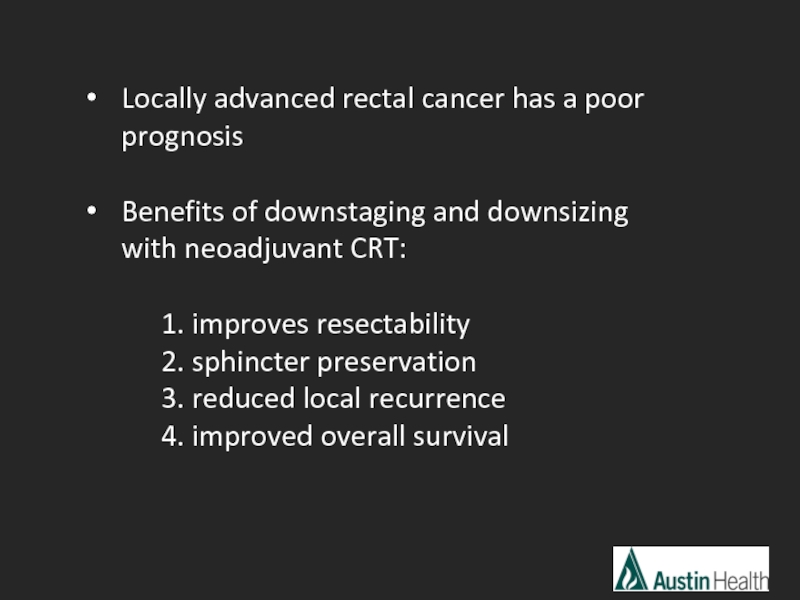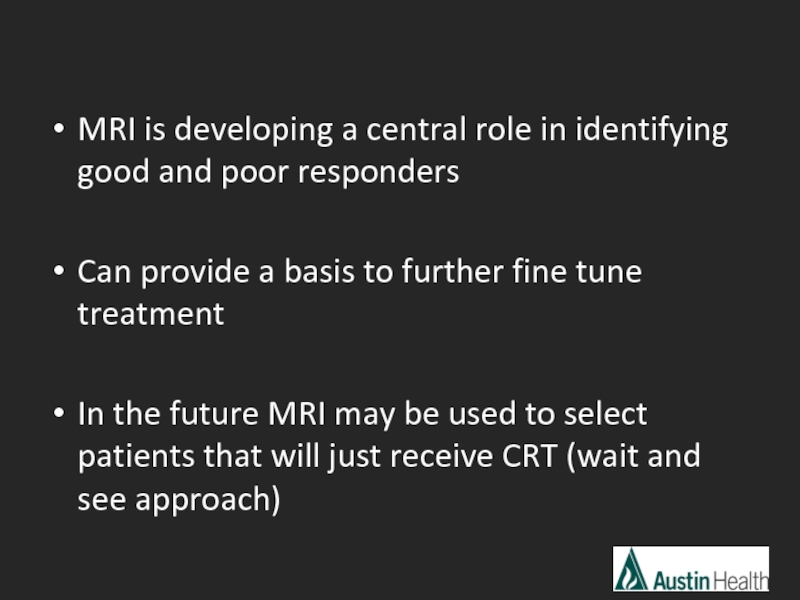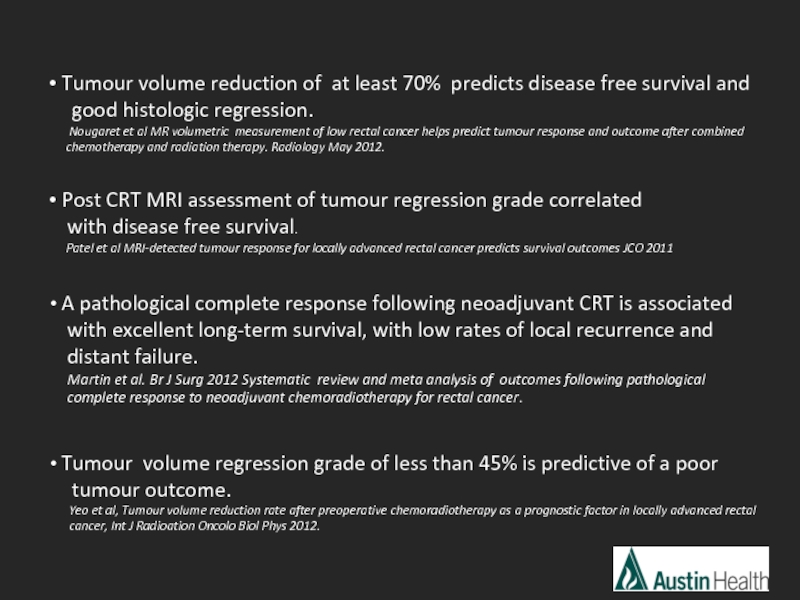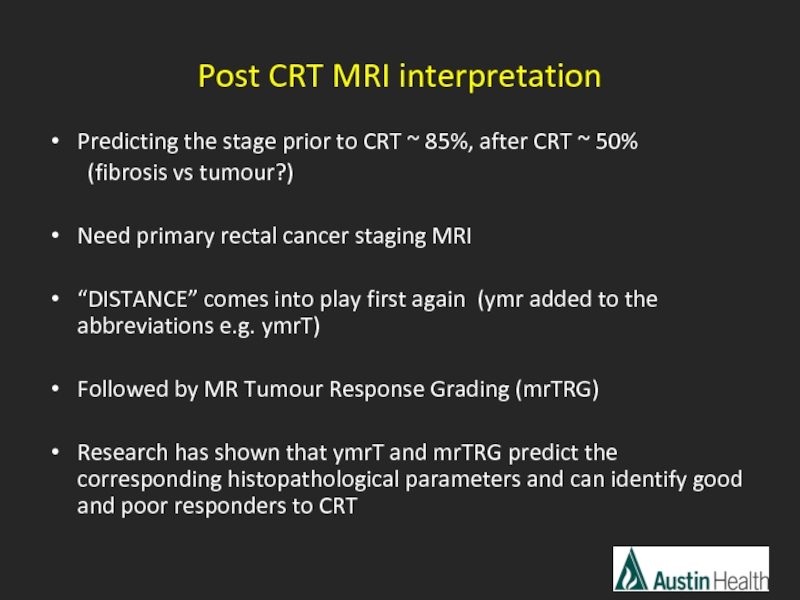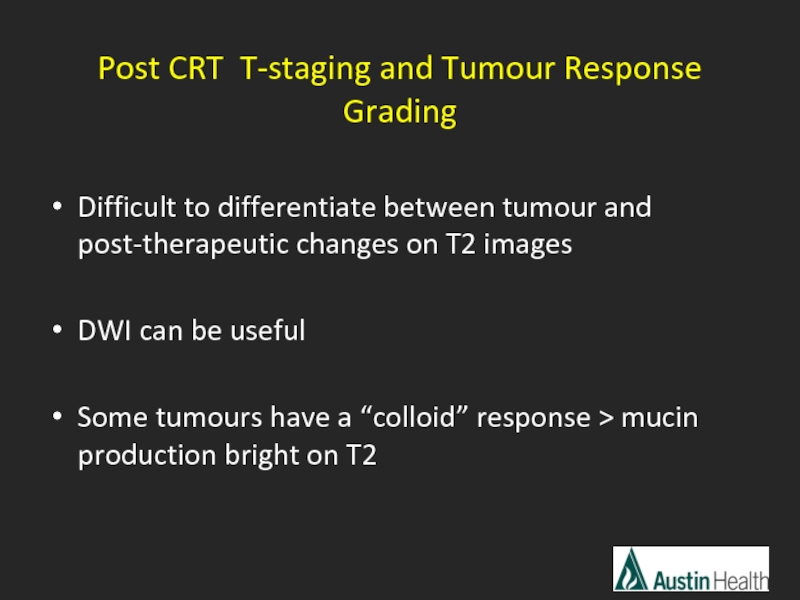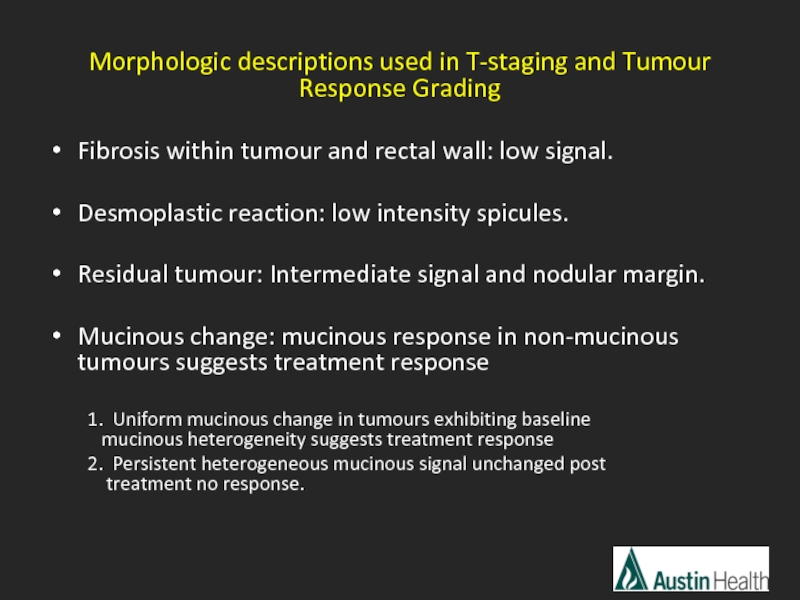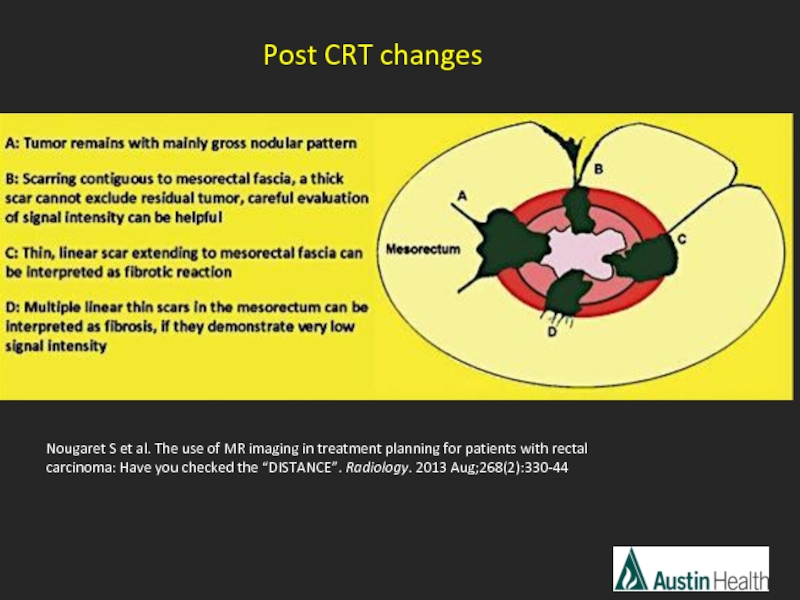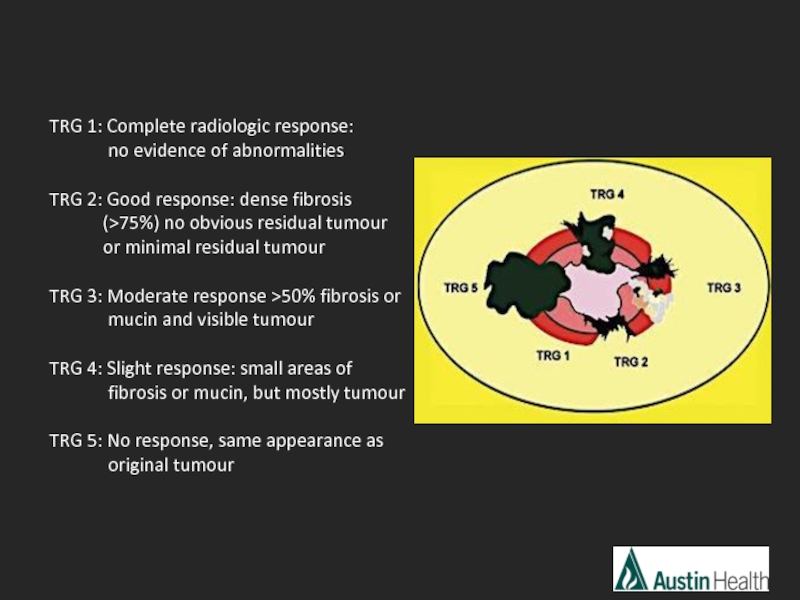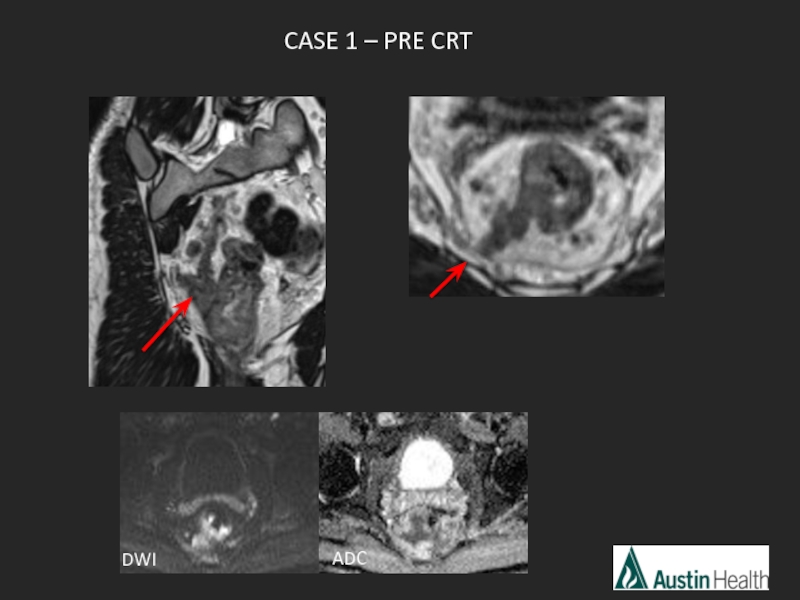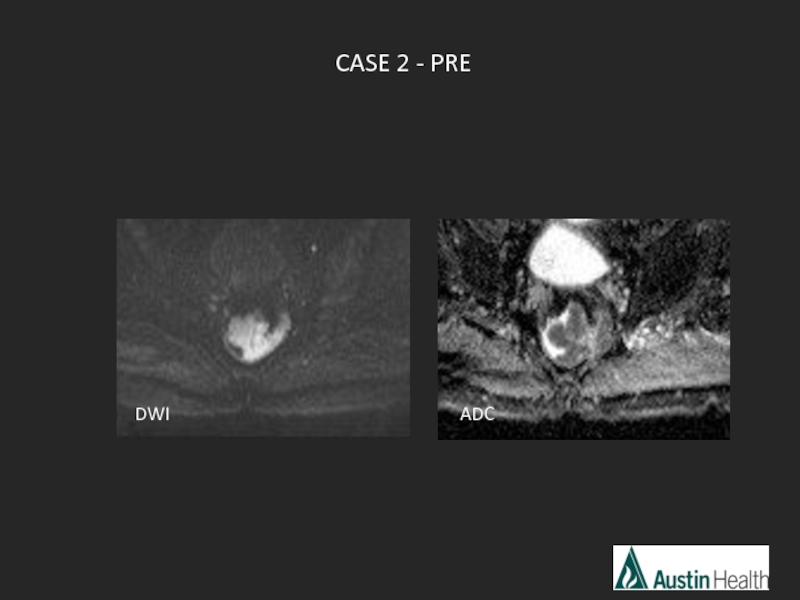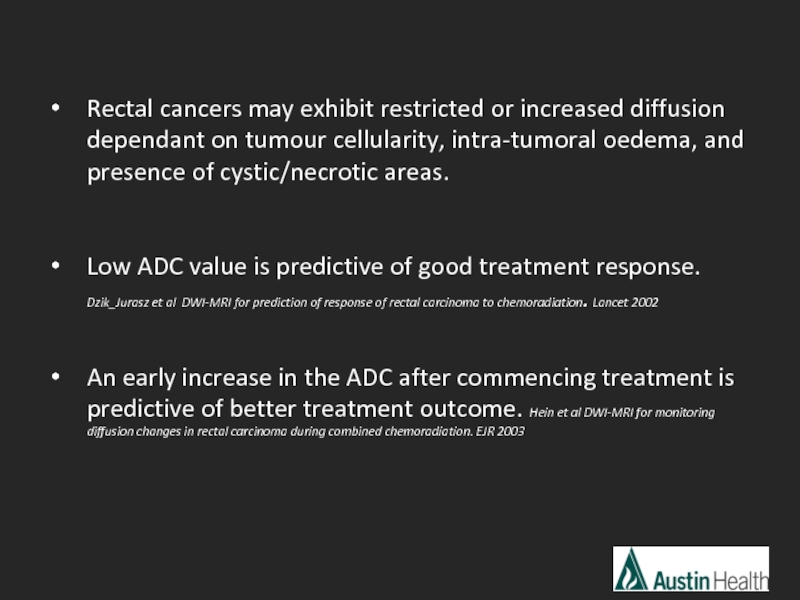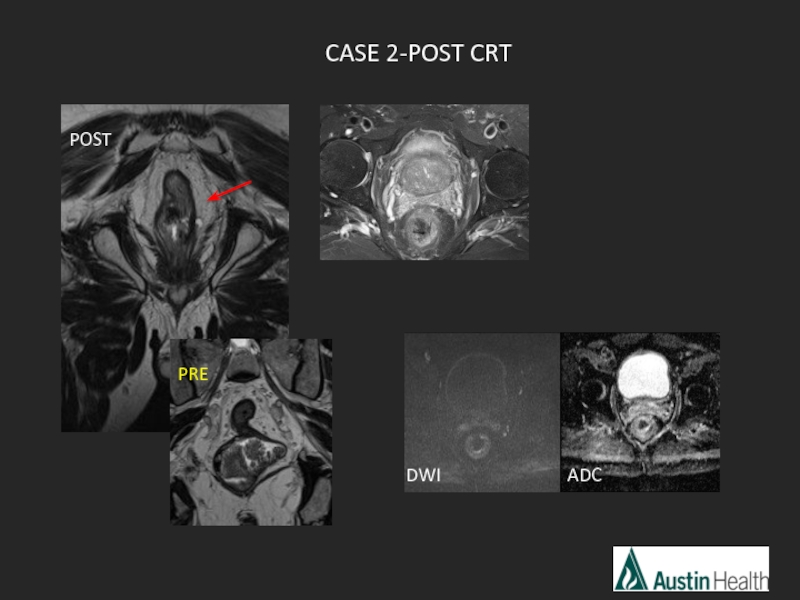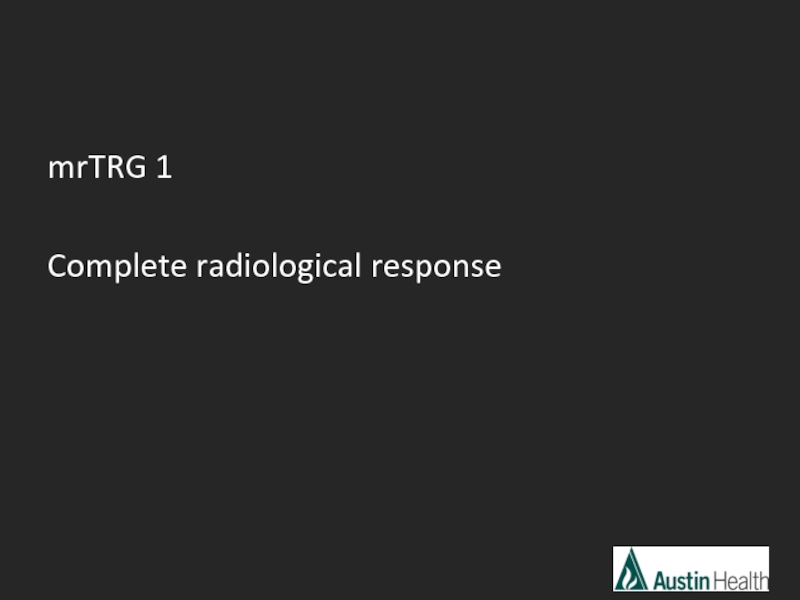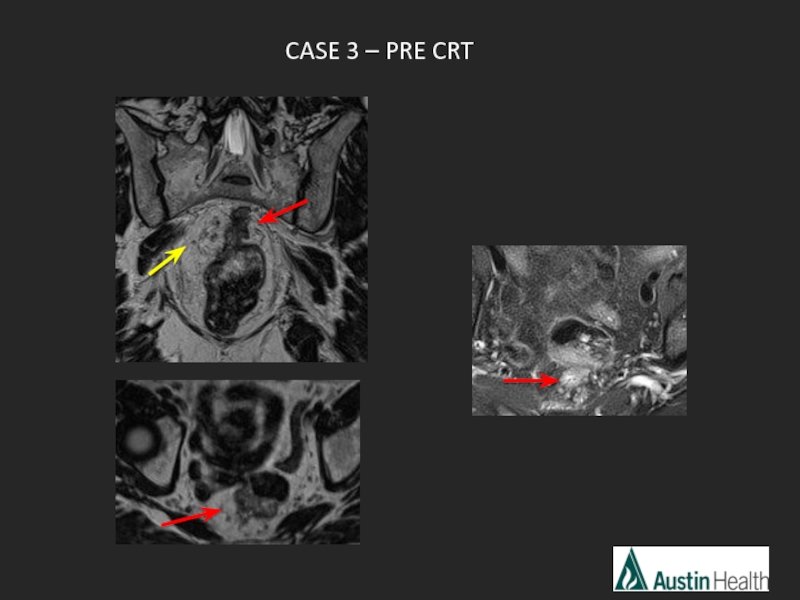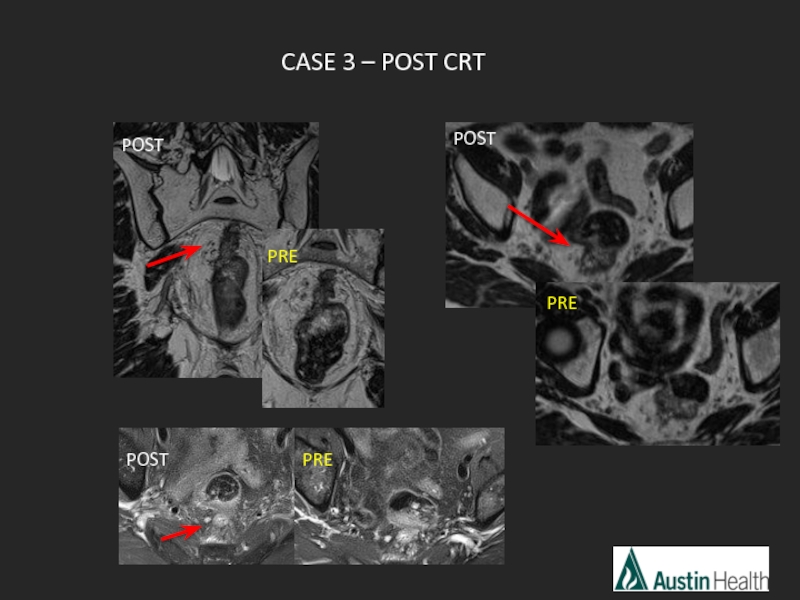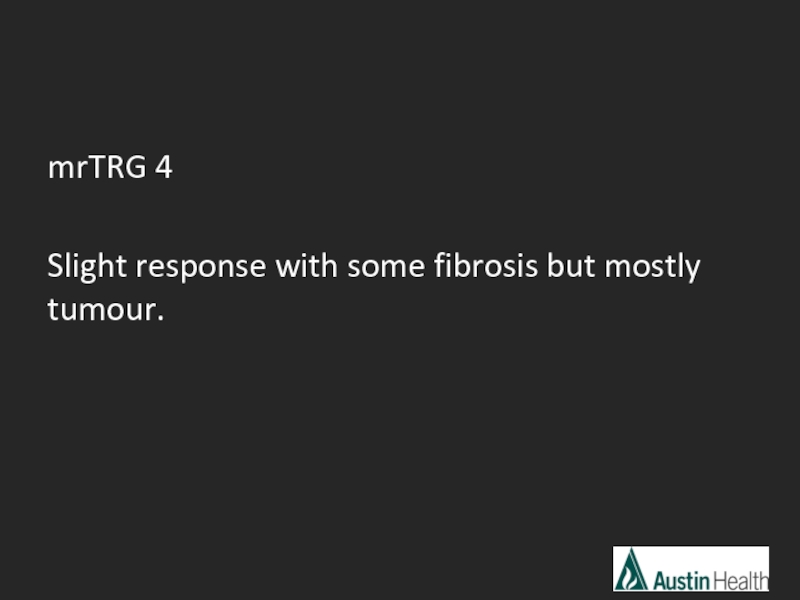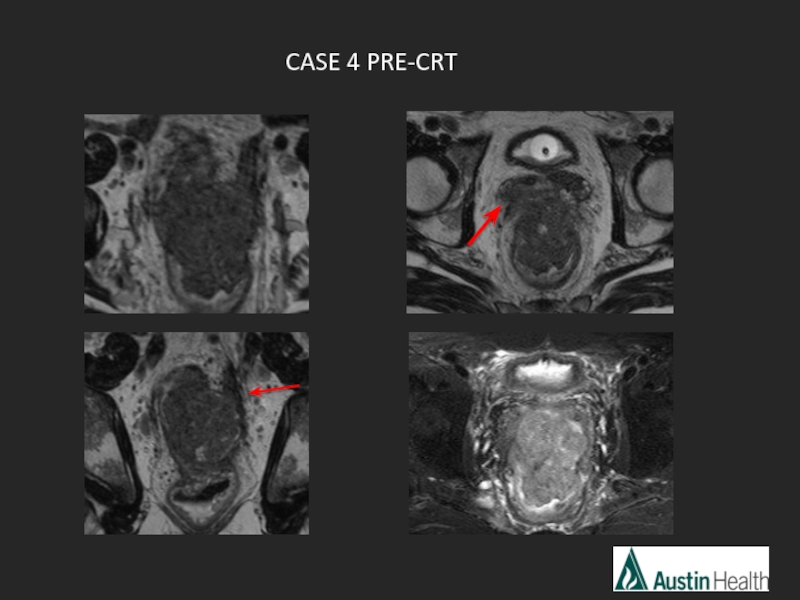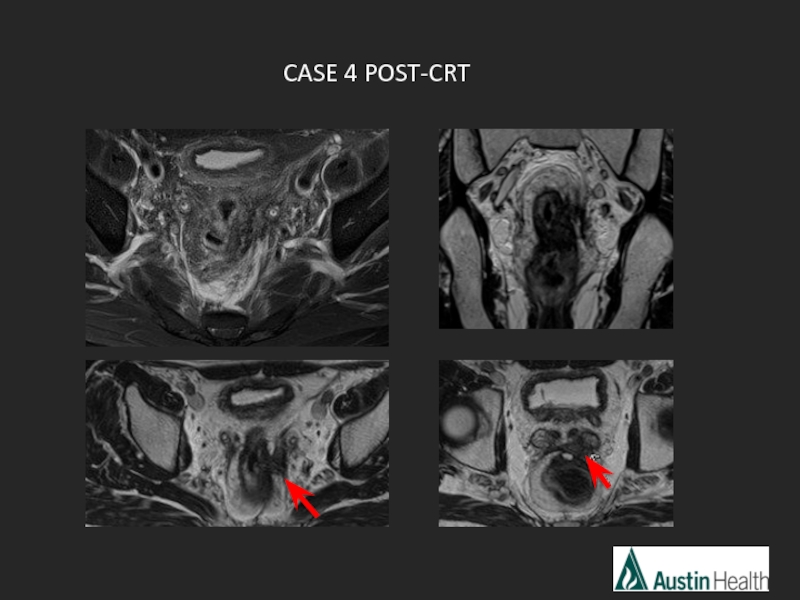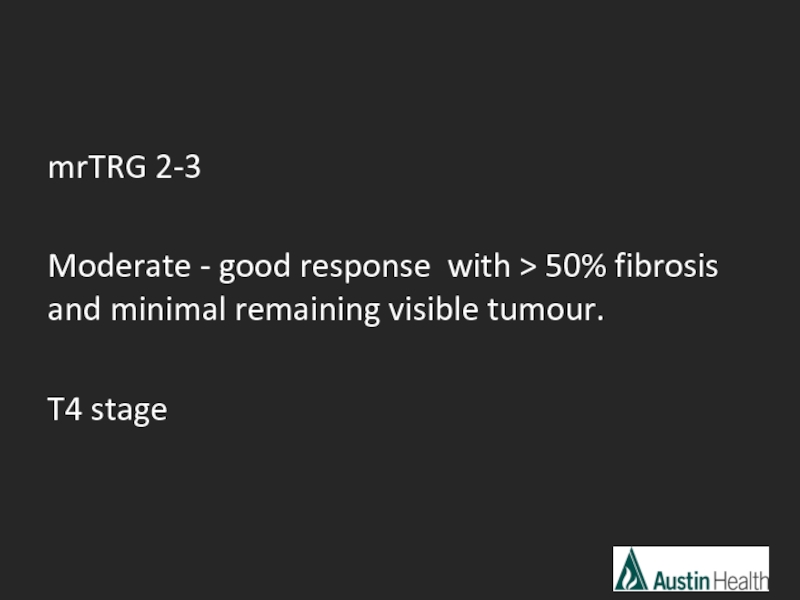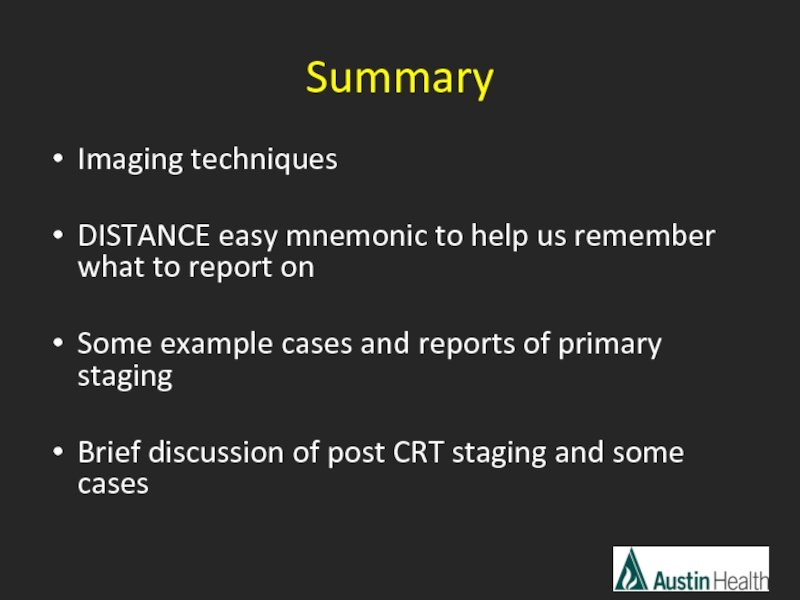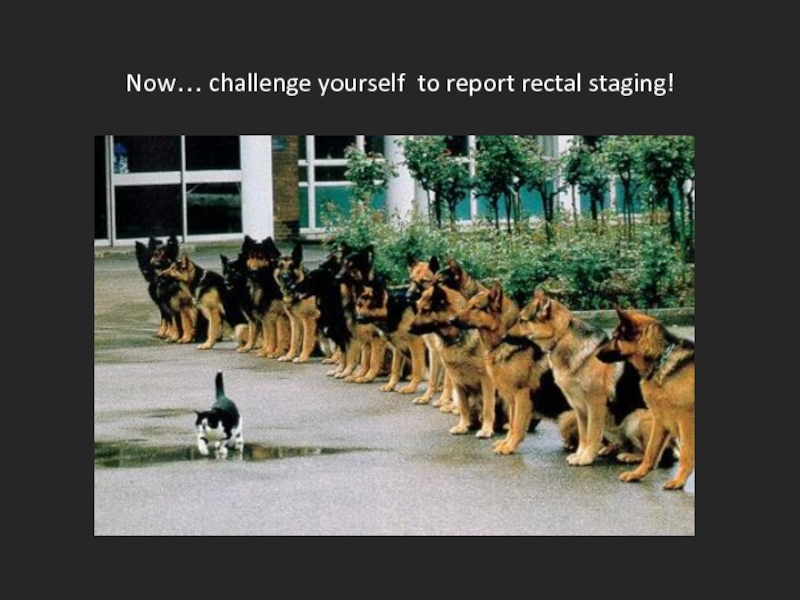Geertje Noë
- Главная
- Разное
- Дизайн
- Бизнес и предпринимательство
- Аналитика
- Образование
- Развлечения
- Красота и здоровье
- Финансы
- Государство
- Путешествия
- Спорт
- Недвижимость
- Армия
- Графика
- Культурология
- Еда и кулинария
- Лингвистика
- Английский язык
- Астрономия
- Алгебра
- Биология
- География
- Детские презентации
- Информатика
- История
- Литература
- Маркетинг
- Математика
- Медицина
- Менеджмент
- Музыка
- МХК
- Немецкий язык
- ОБЖ
- Обществознание
- Окружающий мир
- Педагогика
- Русский язык
- Технология
- Физика
- Философия
- Химия
- Шаблоны, картинки для презентаций
- Экология
- Экономика
- Юриспруденция
Rectal cancer staging go the full “Distance”. MRI презентация
Содержание
- 1. Rectal cancer staging go the full “Distance”. MRI
- 2. “DISTANCE” A mnemonic recently introduced Simplify reporting rectal cancer staging MRI
- 3. Overview MR imaging sequences The report
- 4. We have come such a long way…
- 5. The radiologist plays a central role in
- 6. Technique and sequences No need for bowel
- 7. Additional sequences to consider: DWI T2 fat sat T1
- 8. Austin protocol: Three Plane Localiser Coronal T2
- 9. Overview MR imaging sequences The report
- 10. 4 critical questions need to be
- 11. Other things that need to go in
- 12. Pedersen et al. reported in 2011 that
- 13. Taylor FG et al. A sytematic approach
- 14. DIS – distance from inferior part of
- 15. Overview MR imaging sequences The report
- 16. CASE 1 = 7.8 cm
- 17. 12 6
- 18. Report conclusion: T3 N2 mid rectal tumour
- 19. CASE 2
- 21. Report conclusion: T2 N0 low rectal tumour
- 22. CASE 3
- 25. Report conclusion: T3 N1 mid rectal tumour
- 26. CASE 4
- 29. Report conclusion: Low rectal tumour with a
- 30. CASE 5
- 31. CASE 6
- 33. Overview MR imaging sequences The report
- 34. Main indications for CRT: Locally advanced
- 35. Locally advanced rectal cancer has a
- 36. MRI is developing a central role in
- 37. Tumour volume reduction of at least
- 38. Post CRT MRI interpretation Predicting the stage
- 39. Post CRT T-staging and Tumour Response Grading
- 40. Morphologic descriptions used in T-staging and Tumour
- 41. Nougaret S et al. The use of
- 42. TRG 1: Complete radiologic response:
- 43. CASE 1 – PRE CRT ADC DWI
- 44. ADC CASE 1 – POST CRT POST PRE POST PRE DWI
- 45. mrTRG2 Good response with tumour replaced
- 46. CASE 2 - PRE DWI ADC
- 47. Rectal cancers may exhibit restricted or increased
- 48. DWI ADC CASE 2-POST CRT POST PRE
- 49. mrTRG 1 Complete radiological response
- 50. CASE 3 – PRE CRT
- 51. CASE 3 – POST CRT POST PRE POST PRE POST PRE
- 52. mrTRG 4 Slight response with some fibrosis but mostly tumour.
- 53. CASE 4 PRE-CRT
- 54. CASE 4 POST-CRT
- 55. mrTRG 2-3 Moderate - good response
- 56. Summary Imaging techniques DISTANCE easy mnemonic
- 57. Now… challenge yourself to report rectal staging!
- 58. References Nougaret S, Reinhold C, Mikhael W
Слайд 3Overview
MR imaging sequences
The report for MR rectal cancer staging and “DISTANCE”
Primary
Post CRT staging and cases
Слайд 5The radiologist plays a central role in the multidisciplinary approach to
MRI can accurately stage rectal cancer
Pre-operative staging with MRI important to select the appropriate therapy
Rectal cancer staging with MRI remains a challenge for many radiologists
Слайд 6Technique and sequences
No need for bowel preparation, filling of rectum with
Antispasmodic agents can be helpful but are not mandatory
Only sequence that is required is a T2 –weighted fast spin echo sequence (high resolution)
IV contrast is not recommended as it does not improve diagnostic quality
Слайд 8Austin protocol:
Three Plane Localiser
Coronal T2 3D SPACE Whole Pelvis
Axial T1
Axial T2 FS Whole Pelvis
Axial DWI
Modifications Reformat 3D in 3 planes
Coronal Oblique - Angled parallel to the long axis of the rectum
Sagittal
Axial Oblique – Angled perpendicular to the long axis of the rectum
Слайд 9Overview
MR imaging sequences
The report for MR rectal cancer staging and “DISTANCE”
Primary
Post CRT staging and cases
Слайд 10 4 critical questions need to be answered
Location of the tumor
(you can use a specific staging for low rectal tumours describing the involvement of the sphincters)
2. The T-stage of the tumour
Free resection margin for TME (CRM)
4. N-stage
Слайд 11Other things that need to go in the report:
Tumor length, tumor
Distance of tumour to anal verge (+/- anorectal junction)
Circumferential?
Involvement of pelvic side wall nodes
Extramural vascular invasion (EMVI)
Metastasis
Слайд 12Pedersen et al. reported in 2011 that the report quality overall
There is a need for standardisation of reports and Taylor et al from Brown’s group created a form based reporting tool in 2008
Brown’s group also created the mnemonic “DISTANCE”
Слайд 13Taylor FG et al. A sytematic approach to the interpretation pre-operative
Слайд 14DIS – distance from inferior part of tumor to transitional
T – T-staging
A - Anal complex, sphincters and puborectalis muscles
N - Nodal staging
C - CRM
E - Extramural vascular invasion
Nougaret S et al. The use of MR imaging in treatment planning for patients with rectal carcinoma: Have you checked the “DISTANCE”. Radiology. 2013 Aug;268(2):330-44
Слайд 15Overview
MR imaging sequences
The report for MR rectal cancer staging and “DISTANCE”
Primary
Post CRT staging
Слайд 18Report conclusion:
T3 N2 mid rectal tumour with a length of approximately
Слайд 21Report conclusion:
T2 N0 low rectal tumour with a length of 5.1
Слайд 25Report conclusion:
T3 N1 mid rectal tumour with a length of 6.7
Слайд 29Report conclusion:
Low rectal tumour with a length of 5.5 cm with
Staging in keeping with T4 N2 M1
Слайд 33Overview
MR imaging sequences
The report of MR rectal cancer staging and “DISTANCE”
Primary
Post CRT staging
Слайд 34
Main indications for CRT:
Locally advanced rectal tumor T3 with > 5mm
EMVI
Tumor within 1mm of mesorectal fascia (node, tumor, EMVI)
Threatened or involved anal sphincter
Nodal involvement
Post chemoradiation therapy (CRT) staging
Слайд 35
Locally advanced rectal cancer has a poor prognosis
Benefits of downstaging and
1. improves resectability
2. sphincter preservation
3. reduced local recurrence
4. improved overall survival
Слайд 36MRI is developing a central role in identifying good and poor
Can provide a basis to further fine tune treatment
In the future MRI may be used to select patients that will just receive CRT (wait and see approach)
Слайд 37 Tumour volume reduction of at least 70% predicts disease free
good histologic regression.
Nougaret et al MR volumetric measurement of low rectal cancer helps predict tumour response and outcome after combined
chemotherapy and radiation therapy. Radiology May 2012.
Post CRT MRI assessment of tumour regression grade correlated
with disease free survival.
Patel et al MRI-detected tumour response for locally advanced rectal cancer predicts survival outcomes JCO 2011
A pathological complete response following neoadjuvant CRT is associated
with excellent long-term survival, with low rates of local recurrence and
distant failure.
Martin et al. Br J Surg 2012 Systematic review and meta analysis of outcomes following pathological
complete response to neoadjuvant chemoradiotherapy for rectal cancer.
Tumour volume regression grade of less than 45% is predictive of a poor
tumour outcome.
Yeo et al, Tumour volume reduction rate after preoperative chemoradiotherapy as a prognostic factor in locally advanced rectal
cancer, Int J Radioation Oncolo Biol Phys 2012.
Слайд 38Post CRT MRI interpretation
Predicting the stage prior to CRT ~ 85%,
(fibrosis vs tumour?)
Need primary rectal cancer staging MRI
“DISTANCE” comes into play first again (ymr added to the abbreviations e.g. ymrT)
Followed by MR Tumour Response Grading (mrTRG)
Research has shown that ymrT and mrTRG predict the corresponding histopathological parameters and can identify good and poor responders to CRT
Слайд 39Post CRT T-staging and Tumour Response Grading
Difficult to differentiate between tumour
DWI can be useful
Some tumours have a “colloid” response > mucin production bright on T2
Слайд 40Morphologic descriptions used in T-staging and Tumour Response Grading
Fibrosis within tumour
Desmoplastic reaction: low intensity spicules.
Residual tumour: Intermediate signal and nodular margin.
Mucinous change: mucinous response in non-mucinous tumours suggests treatment response
1. Uniform mucinous change in tumours exhibiting baseline mucinous heterogeneity suggests treatment response
2. Persistent heterogeneous mucinous signal unchanged post treatment no response.
Слайд 41Nougaret S et al. The use of MR imaging in treatment
Post CRT changes
Слайд 42TRG 1: Complete radiologic response:
TRG 2: Good response: dense fibrosis (>75%) no obvious residual tumour or minimal residual tumour
TRG 3: Moderate response >50% fibrosis or
mucin and visible tumour
TRG 4: Slight response: small areas of
fibrosis or mucin, but mostly tumour
TRG 5: No response, same appearance as
original tumour
Слайд 47Rectal cancers may exhibit restricted or increased diffusion dependant on tumour
Low ADC value is predictive of good treatment response. Dzik_Jurasz et al DWI-MRI for prediction of response of rectal carcinoma to chemoradiation. Lancet 2002
An early increase in the ADC after commencing treatment is predictive of better treatment outcome. Hein et al DWI-MRI for monitoring diffusion changes in rectal carcinoma during combined chemoradiation. EJR 2003
Слайд 55mrTRG 2-3
Moderate - good response with > 50% fibrosis and minimal
T4 stage
Слайд 56Summary
Imaging techniques
DISTANCE easy mnemonic to help us remember what to report
Some example cases and reports of primary staging
Brief discussion of post CRT staging and some cases
Слайд 58References
Nougaret S, Reinhold C, Mikhael W H et al. The use
Taylor FG, Swift RI, Blomqvis L et al. A sytematic approach to the interpretation pre-operative staging MRI for rectal cancer. Am J Roentgenol. 2008 Dec;191(6):1827-35
Pedersen BG, Blomqvist L, Brown G et al. Postgraduate multidisciplinary development program: impact on the interpretation of pelvic MRI in patients with rectal cancer – a clinical audit in West Denmark. Dis Colon Rectum 2011:54(3):328-334
Barbaro B, Vitale R, Leccisotti L et al. Restaging locally advanced rectal Cancer with MR Imaging after chemoradiation therapy. Radiographics 2010;30:699-721
Patel UB, Taylor F, Blomqvist L et al. Magnetic resonance imaging-detected tumor repsonse for locally advanced rectal cancer predicts survival outcomes: MERCURY experience. J Clin Oncol 2011; 29 (28):3753-3760
Dzik_Jurasz et al DWI-MRI for prediction of response of rectal carcinoma to chemoradiation. Lancet 2002
Hein et al DWI-MRI for monitoring diffusion changes in rectal carcinoma during combined chemoradiation. EJR 2003

